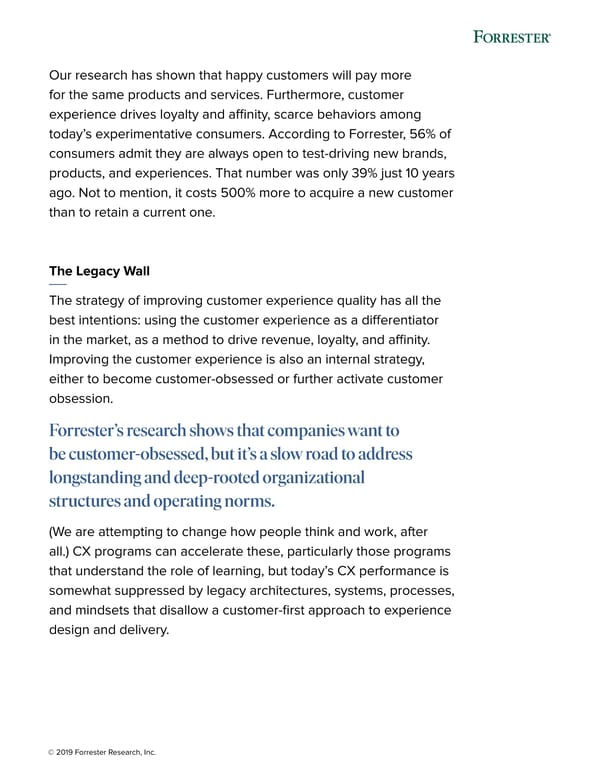Our research has shown that happy customers will pay more for the same products and services. Furthermore, customer experience drives loyalty and affinity, scarce behaviors among today’s experimentative consumers. According to Forrester, 56% of consumers admit they are always open to test-driving new brands, products, and experiences. That number was only 39% just 10 years ago. Not to mention, it costs 500% more to acquire a new customer than to retain a current one. The Legacy Wall The strategy of improving customer experience quality has all the best intentions: using the customer experience as a differentiator in the market, as a method to drive revenue, loyalty, and affinity. Improving the customer experience is also an internal strategy, either to become customer-obsessed or further activate customer obsession. Forrester’s research shows that companies want to be customer-obsessed, but it’s a slow road to address longstanding and deep-rooted organizational structures and operating norms. (We are attempting to change how people think and work, after all.) CX programs can accelerate these, particularly those programs that understand the role of learning, but today’s CX performance is somewhat suppressed by legacy architectures, systems, processes, and mindsets that disallow a customer-first approach to experience design and delivery. © 2019 Forrester Research, Inc.
 Light on the Horizon Page 5 Page 7
Light on the Horizon Page 5 Page 7